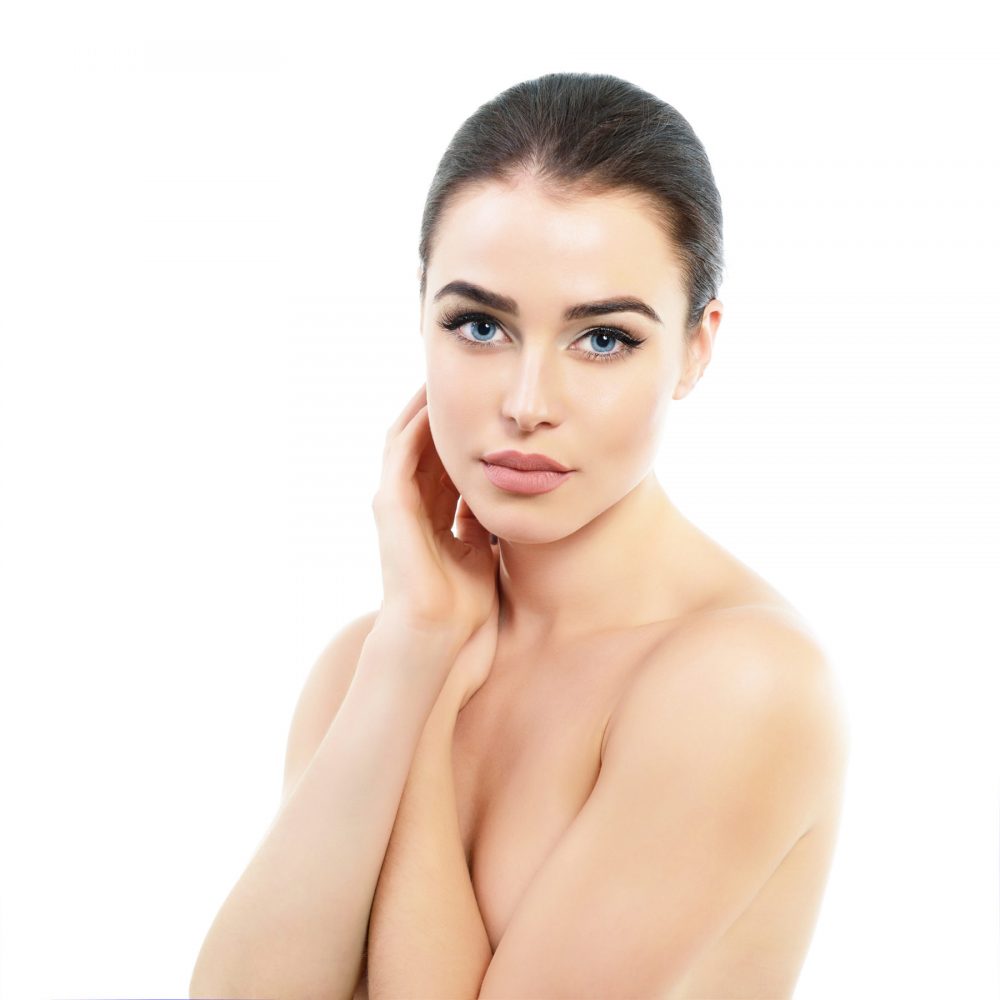
Research indicates that heterosexual men tend to be attracted to young and beautiful women with bodily symmetry. Rather than decreasing it, modernity has only increased the emphasis men place on women’s looks. Evolutionary psychologists attribute such attraction to an evaluation of the fertility potential in a prospective mate.
Facial features
Research has attempted to determine which facial features communicate attractiveness. Facial symmetry has been shown to be considered attractive in women, and men have been found to prefer full lips, a high forehead, broad face, small chin, small nose, a short and narrow jaw, high cheekbones clear, smooth skin, and wide-set eyes. The shape of the face in terms of “how everything hangs together” is an important determinant of beauty.
A University of Toronto study found correlations between facial measurements and attractiveness; researchers varied the distance between eyes, and between eyes and mouth, in different drawings of the same female face, and had the drawings evaluated; they found there were ideal proportions perceived as attractive. These proportions (46% and 36%) were close to the average of all female profiles. Women with thick, dark limbal rings in their eyes have also been found to be more attractive. The explanation given is that because the ring tends to fade with age and medical problems, a prominent limbal ring gives an honest indicator of youth.
In another cross-cultural study, more neotenized (i.e., youthful looking) female faces were found to be most attractive to men while less neotenized female faces were found to be less attractive to men, regardless of the females’ actual age. One of these desired traits was a small jaw. In a study of Italian women who have won beauty competitions, it was found that their faces had more “babyish” (pedomorphic) traits than those of the “normal” women used as a reference.
Michael R. Cunningham of the Department of Psychology at the University of Louisville found, using a panel of Asian, Hispanic and White judges, that the Asian, Hispanic and White female faces found most attractive were those that had “neonate large eyes, greater distance between eyes, and small noses” and his study led him to conclude that “large eyes” were the most “effective” of the “neonate cues”. This idea of Western beauty is shown through some Asian cultures as women strive to physically change the eyelid structure to reflect the typical Western eyelid. East Asian blepharoplasty, also known as the double eyelid surgery, shows the lengths Asian women will go to reach this western ideal of physical attractiveness. Cunningham also said that “shiny” hair may be indicative of “neonate vitality”.
Using a panel of blacks and whites as judges, Cunningham found more neotenous faces were perceived as having both higher “femininity” and “sociability”. In contrast, Cunningham found that faces that were “low in neoteny” were judged as “intimidating”. Cunningham noted a “difference” in the preferences of Asian and white judges with Asian judges preferring women with “less mature faces” and smaller mouths than the White judges.

Cunningham hypothesized that this difference in preference may stem from “ethnocentrism” since “Asian faces possess those qualities”, so Cunningham re-analyzed the data with “11 Asian targets excluded” and concluded that “ethnocentrism was not a primary determinant of Asian preferences.” Rather than finding evidence for purely “neonate” faces being most appealing, Cunningham found faces with “sexually-mature” features at the “periphery” of the face combined with “neonate” features in the “center of the face” most appealing in men and women.
Upon analyzing the results of his study, Cunningham concluded that preference for “neonate features may display the least cross-cultural variability” in terms of “attractiveness ratings” and, in another study, Cunningham concluded that there exists a large agreement on the characteristics of an attractive face. In computer face averaging tests, women with averaged faces have been shown to be considered more attractive. This is possibly due to average features being more familiar and, therefore, more comfortable.
Commenting on the prevalence of whiteness in supposed beauty ideals in his book White Lies: Race and the Myth of Whiteness, Maurice Berger notes that the schematic rendering in the idealized face of a notable study conducted with American subjects had “straight hair,” “light skin,” “almond-shaped eyes,” “thin, arched eyebrows,” “a long, thin nose, closely set and tiny nostrils” and “a large mouth and thin lips”, though the author of the study noted the consistency between his results and those conducted on other races. As Dr. Liu Jieyu says in the article White Collar Beauties, “The criterion of beauty is both arbitrary and gendered. The implicit consensus is that women who have fair skin and a slim figure with symmetrical facial features are pretty.” All of these requirements are socially constructed and force people to change themselves to fit these criterion.
One psychologist speculated there were two opposing principles of female beauty: prettiness and rarity. So on average, symmetrical features are one ideal, while unusual, stand-out features are another. A study performed by the University of Toronto found that the most attractive facial dimensions were those found in the average female face. However, that particular University of Toronto study looked only at white women.
Disclaimer
The Content is not intended to be a substitute for professional medical advice, diagnosis, or treatment. Always seek the advice of your physician or other qualified health provider with any questions you may have regarding a medical condition.